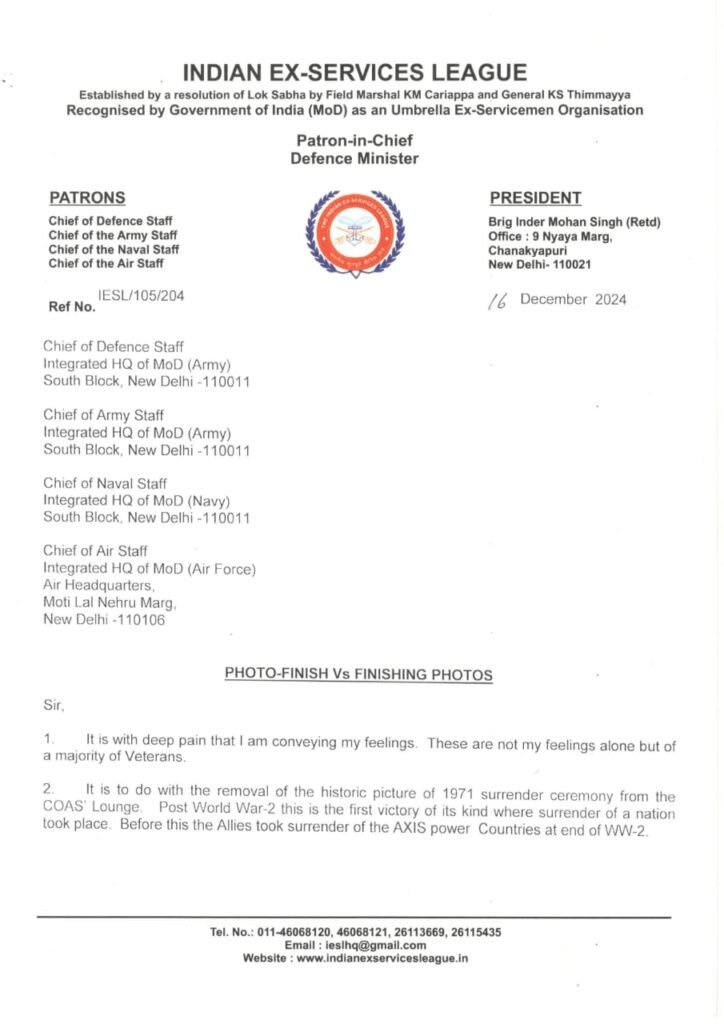On this Vijay Diwas, let us salute the bravery and sacrifices of our soldiers who fought valiantly to protect our nation. Their courage and dedication inspire us to uphold the values of freedom and unity. Let us remember their sacrifices with gratitude and pledge to work for a stronger and more peaceful India.

india ended the war in 13 days, and marked the formation of East Pakistan as the new nation of Bangladesh. On December 16 1971, the chief of Pakistani forces, General AA Khan Niazi, along with 93,000 troops, surrendered unconditionally before the Indian military, in what was the world’s largest surrender in terms of the number of personnel since World War II.Notably, the Indo-Pakistan war of 1971 was also one of the shortest wars in world history, fought for a mere one week and six days. It changed the world’s perception of India, marking its recognition as a significant regional power.
You surrender, or we wipe you out’
“You surrender, or we wipe you out” were the words the then Indian Army Chief Field Marshal Sam Manekshaw, widely regarded as the architect of India’s victory, gave to Pakistan during the Indo-Pak War of 1971.
Very few people know that Manekshaw and Yahya Khan, the third president of Pakistan, were colleagues before the partition. When they parted ways during the partition, Yahya offered to buy Manekshaw’s red James motorcycle. He promised to pay ₹1,000 for it but did not keep his word. When the instrument of surrender was being signed on December 16, 1971, Manekshaw was heard saying, “Yahya never paid me the Rs 1000 for my motorbike, but now he has paid with half his country.”
‘Liberator of Bangladesh’
One of the most iconic moments captured during the 1971 India-Pakistan war was when the shaken Pakistani Lt General Niazi signed the instrument of surrender next to India’s Lt General Jagjit Singh Aurora, known as the ‘Liberator of Bangladesh’.
Interestingly, General Aurora did not forsake his 18-round of golf inside Fort Williams headquarters in Kolkata before flying to Dhaka to accept the instrument of surrender.
During the war, Lt. General JFR Jacob, Eastern Command’s Chief of Staff and Lt. General Aurora pursued the strategy of ‘leaving the highways for the byways’ to cut off the supply line of Pakistan’s side, causing them to surrender on the 13th day of the war.
Diplomatic Initiatives
However, before resorting to military action, India exhausted its diplomatic initiatives to stop the genocide in Bangladesh. Indira Gandhi, the then prime minister, invited US National Security Adviser Henry Kissinger in July 1971 for breakfast and asked him to tell President Nixon to prevail upon Yahya Khan to hand over the power to Sheikh Mujib.
Indira Gandhi threatened to take action if the US didn’t act after failing to get a satisfactory response. Both China and the US jointly tried to stall the liberation of Bangladesh through UNSC resolutions but failed due to Soviet interference.
(With inputs from agencies)

Hats off to Brig Inder Mohan Singh , President IESML to show the Mirror to CDS and Three Services Chiefs, for their disgraceful act of removing ‘Historic Photograph’ just to please political leadership and disowning the achievements of our Armed Forces of 1971 .
He has rightly asked for that painting /photograph to be given to IESML so it could find a place of honour .He has told them on that he has stopped wasting money to put photographs of retiring Chiefs in IESML Office due to the ‘Fact’ that they have failed to solve ESM problems .
I express my gratitude and thanks to Brig Inder Mohan Singh, President IESML for standing be ESM and upholding the sacrifices of ESM in guarding and building the Nation.


The surrender ceremony took place at the Ramna Race Course in Dacca, East Pakistan (now Bangladesh), on 16 December 1971: A. A. K. Niazi of the Pakistan Army formally surrendered to Jagjit Singh Aurora, an Indian Army officer and joint commander of the Bangladesh Forces.
